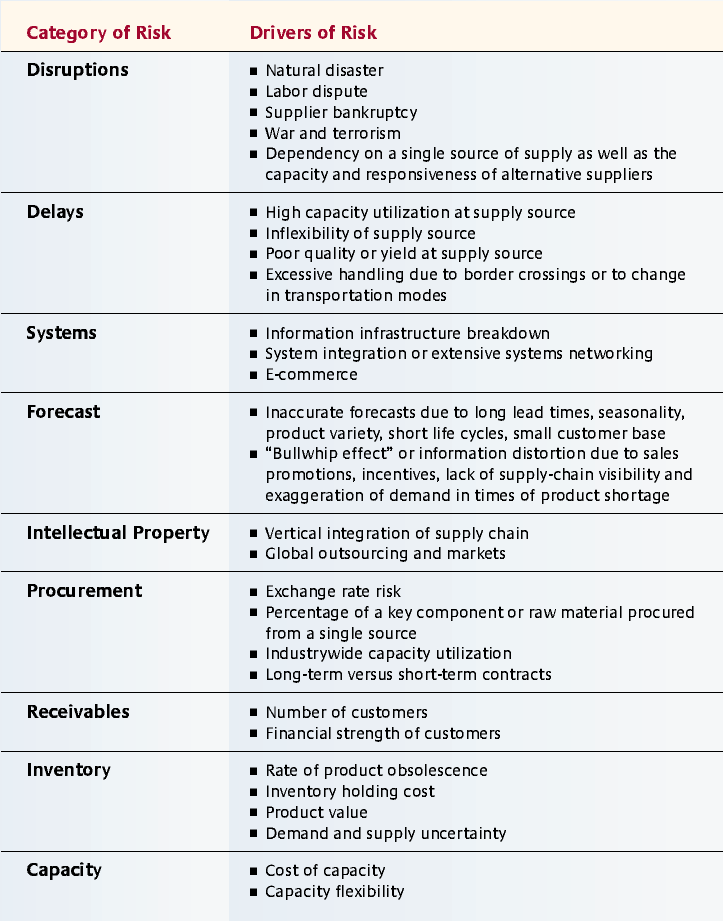Managing Risk to Avoid Supply-Chain Breakdown
By understanding the variety and interconnectedness of supply-chain risks, managers can tailor balanced, effective risk-reduction strategies for their companies.
On March 17, 2000, lightning hit a power line in Albuquerque, New Mexico. The strike caused a massive surge in the surrounding electrical grid, which in turn started a fire at a local plant owned by Royal Philips Electronics, N.V., damaging millions of microchips. Scandinavian mobile-phone manufacturer Nokia Corp., a major customer of the plant, almost immediately began switching its chip orders to other Philips plants, as well as to other Japanese and American suppliers. Thanks to its multiple-supplier strategy and responsiveness, Nokia’s production suffered little during the crisis.
In contrast, Telefon AB L.M. Ericsson, another mobile-phone customer of the Philips plant, employed a single-sourcing policy. As a result, when the Philips plant shut down after the fire, Ericsson had no other source of microchips, which disrupted production for months. Ultimately, Ericsson lost $400 million in sales.1 (Ericsson has since implemented new processes and tools for preventing such scenarios.2)
These two dramatically different outcomes from one event demonstrate the importance of proactively managing supply-chain risk. Supply-chain problems result from natural disasters, labor disputes, supplier bankruptcy, acts of war and terrorism, and other causes. They can seriously disrupt or delay material, information and cash flows, any of which can damage sales, increase costs — or both. Broadly categorized, potential supply-chain risks include delays, disruptions, forecast inaccuracies, systems breakdowns, intellectual property breaches, procurement failures, inventory problems and capacity issues. Each category has its own drivers (see “Supply-Chain Risks and Their Drivers.”) and mitigation strategies (see “Assessing the Impact of Various Mitigation Strategies.”).
Supply-chain Risks And Their Drivers
Supply-Chain Risks and Their Drivers
Before companies can devise effective means of reducing supply-chain risks, managers must first understand the universe of risk categories as well as the events and conditions that drive them. Then, armed with clear, specific knowledge about these crucial risks, companies can proceed to select and tailor mitigation strategies likely to be most effective. (See “Assessing the Impact of Various Mitigation Strategies.”)
Assessing The Impact Of Various Mitigation Strategies
Assessing the Impact of Various Mitigation Strategies
Unfortunately, there is no silver-bullet strategy for protecting organizational supply chains. Instead, managers need to know which mitigation strategy works best against a given risk.
References (21)
1. R. Eglin, “Can Suppliers Bring Down Your Firm?” Sunday Times (London), Nov. 23, 2003, appointments sec., p. 6.
2. A. Norrman and U. Jansson, “Ericsson’s Proactive Supply Chain Risk Management Approach After a Serious Sub-Supplier Accident,” International Journal of Physical Distribution & Logistics Management 34, no. 5 (2004): 434–456.






Comment (1)
ANSHUMAN KHARE